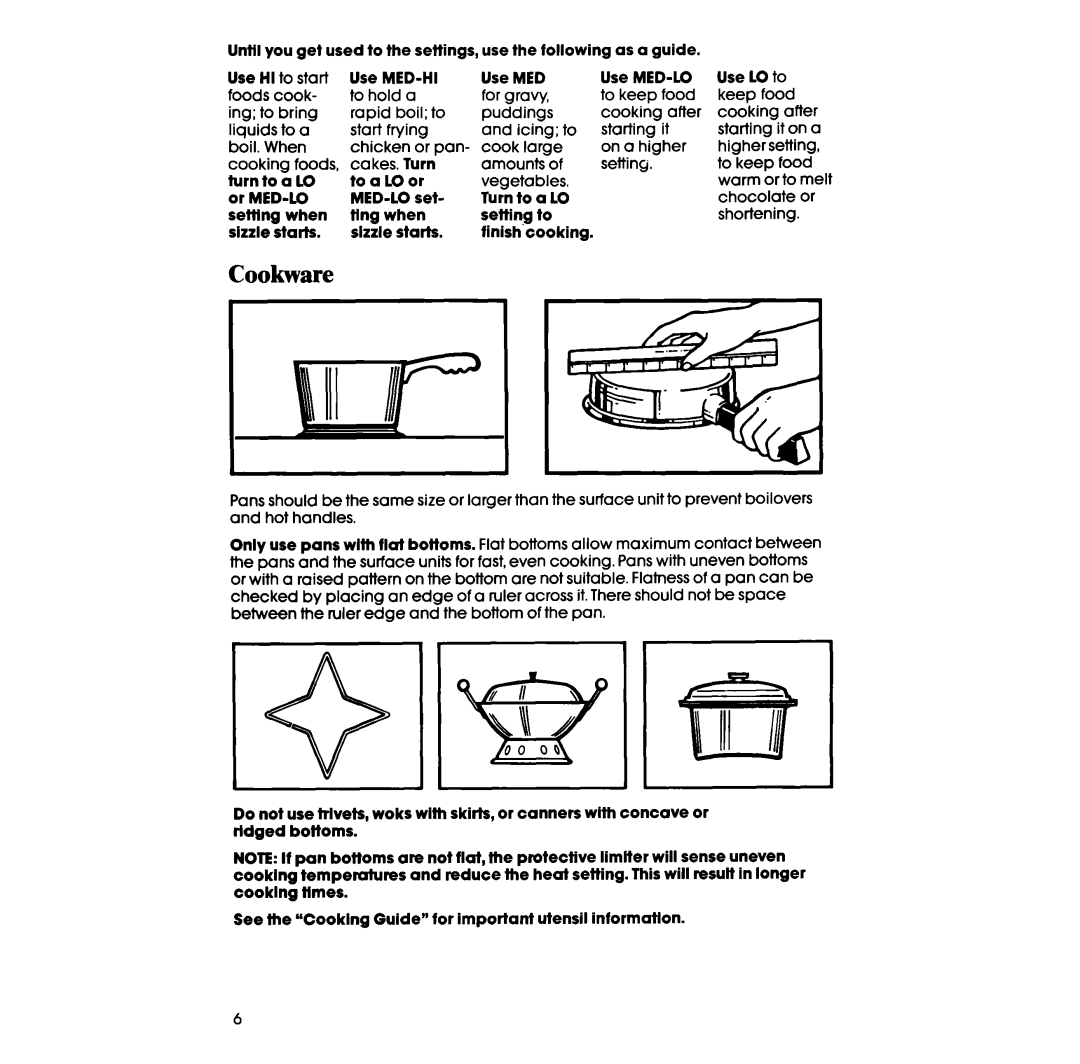
Until you get used to the settings, use the following as a guide.
Use HI to start | Use |
| Use | MED | Use | Use | LO to |
| ||||||
foods | cook- | to hold | a |
| for gravy, | to keep | food | keep | food |
| ||||
ing; to | bring | rapid |
| boil; | to | puddings |
| cooking | after | cooking | after | |||
liquids | to a | start | frying |
| and | icing; to | starting | it | starting | it on a | ||||
boil. When | chicken | or | pan- | cook | large | on a higher | higher | setting, | ||||||
cooking | foods, | cakes. | Turn |
| amounts | of | setting. |
| to keep | food | ||||
turntoal0 | toalOor |
|
| vegetables. |
|
| warm | or to | melt | |||||
or | Turn | to | a LO |
|
| chocolate | or | |||||||
sefffng | when | tlng | when |
| seftin,g | to |
|
| shortening. |
| ||||
sizzle | starts. | sizzle | starfs. | finish | cooking. |
|
|
|
|
|
| |||
Cookware
Pans should be the same size or larger than the surface unit to prevent boilovers and hot handles.
Only use pans with flat bottoms. Flat bottoms allow maximum contact between the pans and the surface units for fast, even cooking. Pans with uneven bottoms or with a raised pattern on the bottom are not suitable. Flatness of a pan can be checked by placing an edge of a ruler across it. There should not be space between the ruler edge and the bottom of the pan.
Do not use trlvets, woks with skirts, or canners wfth concave or rldged bottoms.
NOTE: If pan bottoms are not flat, the protective Ifmlter will sense uneven
cooklng temperatures and reduce the heat setting. This will result in longer cooklng times.
See the “Cooklng Guide” for important utensil informatlon.
6
